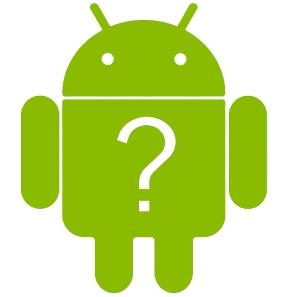Below are some Best Android Apps to find your Lost Android Mobile
Now this is
one app that you should have in your android phone, because if in case your phone is stolen or misplaced, then you can login to see where your phone is. The app lets you to track your android phone in real time, and it works worldwide! One thing to make sure is, after installation of app you should activate it in order to locate your android phone. With this app you can check on your lost phone, trace it, find it via GPS, trigger a noise to find it. This is a best option to locate your android phone
This app is full of features that help in finding your Android Phone. The extended features make it easy to track down the missing cell phone.
It is capable of ringing your cell phone and that too on a high volume. The app is also potent and can pin GPS location points in a Google Map, so even if you’re not near your cell phone to hear it ringing, you can still track it via Google Map. With this app you can make your cell phone vibrate/ring, find it using GPS tracking, protect using passcode, get notified if SIM card is changed, and moreover the app doesn’t suck out all the battery of your Android Phone.
This app lets you to tighten the security of your phone if it is lost or stolen. You can track the location, trigger the app to take pictures, and see them on their website. The app lets you to view the location of the phone with the help of GPS, notifies you regarding any changes that take place with phone number or SIM, also lets you view the images that get taken from the camera of the cell phone. This app is the oldest and a famous anti-theft application that has been used by android users to ensure the safety of their device.

Plan B comes as a lifesaver, especially if you haven’t installed any tracking application on your android device before it got misplaced or stolen. This is very helpful, as you can install it on your android device and it’ll immediately start sending your android phone’s location to your gmail account. Before you get started with any of this, you need to make sure that you have an access to the android google store, and since you had android phone you must be having a google account as well. What makes Plan B excellent is the fact that it has the ability to switch on the GPS of your android device. Moreover the location of your android device gets updated in every 10mins, and you will receive an email notification every time your cell phone gets located.

This application can turn out to be a nightmare for the thief who stole your Android phone! With this application you can remotely control your android device with the help of SMS or internet. It gives you a wide variety of features that lets you to read all the sent as well as received text messages, lets you wipe and lock the phone, erase the SD card’s data, locate it with the help of GPS network, remotely trigger SMS alarm, sms lock and unlock, start/stop GPS and wi-fi, get notified if the SIM is removed or changed, get call log, take image from the rear and front camera, issue commands with the help of SMS, restore settings, use mic to record sound, check the browser’s content and so on. There’s so much that you can do with the help of this application, and can make your android phone totally useless to its thief!
Prey Anti Theft is another application especially made to help you deal with the situation when you have lost your android smartphone, laptop or tablet. It works the same if your device has been stolen. You can easily track your device with the help of GPS location, but there are many other features that make this app absolutely wonderful. This app is free to install, and you can use it to safeguard upto 3 android devices with one single account. It lets you find your smartphone with the help of GPS and WiFi, makes it possible for you to get pictures clicked from the smartphone’s rear and front camera, lock your smartphone, trigger an alarm even if your phone is on silent, get information from the network to get details about exact pinpointing! All in all, its another best application to try out if you have lost or misplaced your android device.









